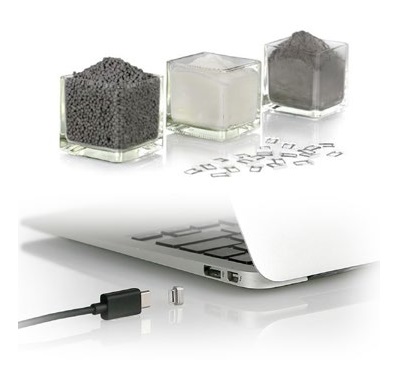 The technology of metal injection molding (MIM) has been around for decades and has proven to be a successful method for producing complex metal parts with high accuracy and precision in large quantities. Thanks to advances in technology and the growing demand for efficient manufacturing processes, the future of MIM technology looks promising.
The technology of metal injection molding (MIM) has been around for decades and has proven to be a successful method for producing complex metal parts with high accuracy and precision in large quantities. Thanks to advances in technology and the growing demand for efficient manufacturing processes, the future of MIM technology looks promising.
Great quantity in excellent quality
One of the main advantages of the process is that it can be used to produce parts in large quantities and with high efficiency. MIM technology is capable of producing thousands of parts in a single cycle, making it an ideal method for high-volume production. This is particularly beneficial for industries such as the automotive, consumer electronics or medical industries, where large quantities of high-quality components are required. Another advantage of MIM is that it can produce complex parts with high precision. The ability to produce components with complex shapes and small sizes also makes the method attractive to industries such as electronics.
New materials and molds
The future of MIM looks bright as advances in technology make the process more efficient and cost-effective. Currently, one of the main areas of research related to MIM is the development of new materials that can be used in the process. Researchers are investigating new metal powders and binders that can be used to produce even stronger and more durable parts. The development of new molding techniques can also open new horizons, because they can be used to produce even more complex shapes. Researchers are investigating the use of 3D printing (additive) technology to create more complex molds that can then be used in the process.
Efficiency and sustainability
The development of automation technology also holds great potential. The development of robotics and other automated systems is aimed at streamlining the production process and reducing labor costs. In addition, the future of MIM technology is strongly influenced by the growing demand for sustainable and environmentally friendly production processes. MIM is already known for its high material efficiency, because hardly any waste is generated during the process. However, researchers are investigating how the process could be made even more sustainable, for example by using renewable energy sources.
The diversification of materials and process complexity will be key trends for the MIM technology. The companies in the MIM industry must follow the diversified needs of the market for other MIM materials, such as ecpanding the application of MIM to titanium allys, magnetic materials, nickel-base alloys, and others.
